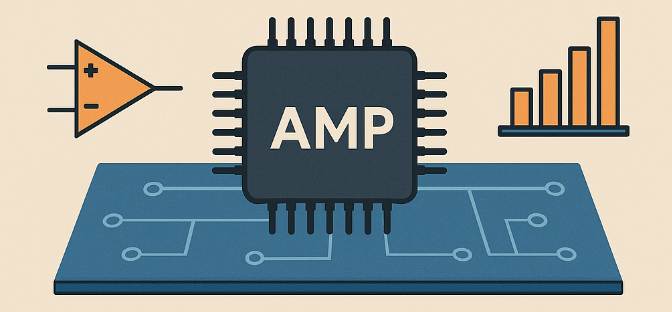When designing analog circuits, choosing the right amplifier is key to achieving reliable performance. Analog Devices (ADI) and Texas Instruments (TI) are two of the most trusted amplifier manufacturers. Each has its strengths, and the best choice often depends on your specific requirements.
At AXTEK, we work closely with engineers and sourcing teams across industries to provide component recommendations and design insights—so here’s a practical comparison based on real-world applications, not just datasheets.

1. Two Giants, Two Approaches
ADI focuses on high-precision analog solutions. Their amplifiers are known for low noise, low offset, and long-term stability—ideal for instrumentation, medical, and industrial use.
TI, on the other hand, offers a wide range of amplifiers with solid performance and strong cost efficiency, making them popular in consumer electronics, low-power systems, and price-sensitive designs.
2. Common Models Engineers Use
Here’s a field-level comparison that many of our clients at AXTEK have referenced during project discussions:
| Application Area | ADI Models (Active) | TI Alternatives | Notes |
| Precision Measurement | ADA4522, AD8605 | OPA2188, OPA2333 | ADA4522 excels in ultra-low offset. |
| Instrumentation | AD8421, AD8237 | INA333, INA826 | AD8421 is preferred in sensor front ends. |
| Portable Devices | AD8541, ADA4505 | TLV2372, OPA2333 | Comparable specs; ADI leads in thermal drift. |
| Biopotential Systems | AD8232, AD8237 | INA333, OPA320 | AD8232 is proven in ECG modules. |
| General Purpose | AD8605, OP07 | TLV9052, LM358 | TI leads in cost; ADI in precision. |
Note: The classic AD620 has been discontinued. For instrumentation use, we recommend AD8421 or AD8237, both active and widely supported.

3. How to Choose—AXTEK Insights
Our engineering support team often guides customers through amplifier selection. Here’s a simplified guideline:
Need long-term stability or low drift? → Go with ADI.
Need a cost-effective, general-purpose amp? → TI is often a better fit.
Building a medical device or certified sensor system? → ADI has the edge in signal integrity and documentation.
Designing for battery life? → Evaluate ADA4505 (ADI) and OPA2333 (TI) head to head.
At AXTEK, we stock and support both ADI and TI amplifiers—and help customers quickly pivot to alternatives if a model is nearing obsolescence.
4. What to Look at Beyond Price
Experienced engineers know that spec sheets don’t always tell the whole story. When choosing an op amp, pay attention to:
In low-noise analog signal chains (like pressure sensors, load cells, or ECG), poor amplifier selection leads to data loss, drift, and unexpected failures.
5. Quick Summary
Need this? | ADI Might Be Better | TI Might Be Better |
Ultra-low offset/drift | √ YES | * Acceptable |
Tight cost budget | * Sometimes | √ Strong |
General-purpose design | * May be over-spec'd | √ Good range available |
Sensor or medical signal | √ Proven use cases | * Fewer off-the-shelf ref designs |
Final Thoughts
Both ADI and TI produce excellent amplifiers. It’s not about one being better overall, but about what’s better for your specific design.
At AXTEK, we help hardware teams not only find reliable parts, but also navigate supply chain changes and EOL (end-of-life) issues. If you’re comparing amplifier specs or replacing discontinued models, feel free to reach out—we’re here to support with both technical insights and original component sourcing.


 MCU Solutions
MCU Solutions PCBA Solutions
PCBA Solutions Bluetooth Solutions
Bluetooth Solutions
 FAQ
FAQ Contact Us
Contact Us
 Company News
Company News Technology News
Technology News Industry News
Industry News PCBA News
PCBA News
 Company Profile
Company Profile Certificates
Certificates Terms & Conditions
Terms & Conditions Privacy Statement
Privacy Statement
 Home Appliances
Home Appliances Beauty Appliances
Beauty Appliances Lighting
Lighting Kid's Toys
Kid's Toys Security Alarm
Security Alarm Health Care
Health Care




 More information?
More information?


















